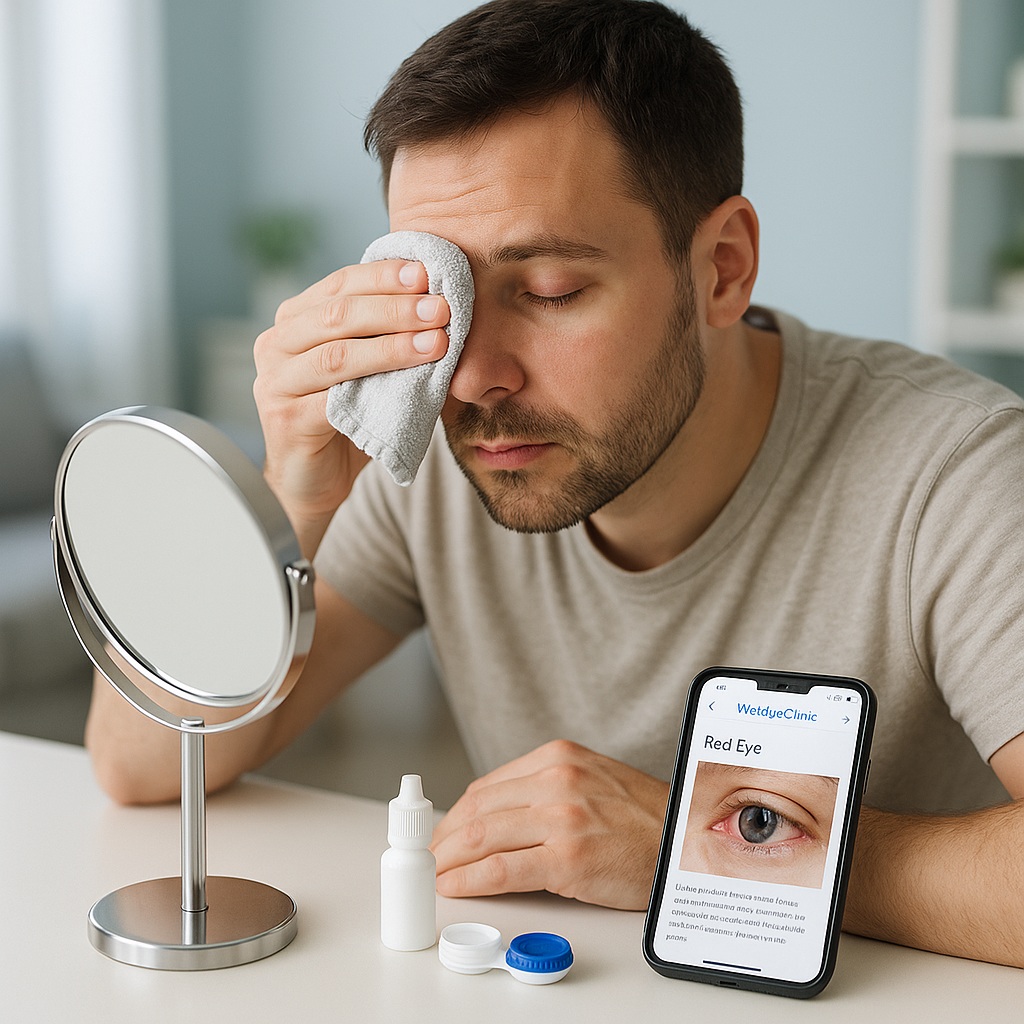WebEyeClinic frequent ask question: how the website works, Visio AI assistant, doctor review, uploads, languages, privacy, and pricing.
Published: November 2025
This page answers the most frequent ask question about the WebEyeClinic website and service — what Visio does, how doctor review works, what you can upload, and why we don’t give diagnoses.
Frequent Ask Question – WebEyeClinic
These answers are about WebEyeClinic as a platform, not general eye diseases. Read this first if you want to know what the site does, what is AI, and what the doctor actually checks.
1. What is WebEyeClinic?
WebEyeClinic is an online eye-care platform that helps you understand your eye problem using two steps: first you talk to Visio, our AI assistant for eye symptoms, and then your case can be reviewed by an ophthalmologist. You can describe symptoms, upload eye images or scans, and get clear, educational guidance about what to do next.
2. Is it just AI or are there real doctors?
It is AI + real doctors. Visio collects your eye details in your language, but the medical safety comes from a licensed ophthalmologist who reviews the case and makes sure the information is correct and not dangerous. That is why we say WebEyeClinic is AI-powered but doctor-checked.
3. What languages can I use?
You can chat in any language. Visio will translate and organise your message so the doctor can read it. The doctor’s answer is written in English, and Visio can show it back to you in your own language. This is useful if you live outside English-speaking countries but want professional eye guidance.
4. Can I get a diagnosis or prescription from WebEyeClinic?
No. WebEyeClinic is for education and triage support only. We do not give final diagnosis, prescriptions, or treatment. Eye conditions often need a face-to-face exam with slit lamp, dilation, and eye pressure check — these can only be done in clinic. We tell you how serious it might be and which doctor to see.
5. Why doesn’t WebEyeClinic provide diagnosis or treatment?
Because many eye problems look similar online. A red eye photo could be allergy, uveitis, infection, or glaucoma. Without examining the eye, giving medicine online is not safe. WebEyeClinic’s goal is to prepare you: explain your symptoms, explain your scans, and tell you what to ask your eye doctor.
6. What eye images can I upload?
You can upload the common images eye clinics give you:
- OCT scans
- Pentacam or corneal topography
- Fundus / retina photos
- Fluorescein angiography (FFA)
- Clear photos of your eye or eyelid
Visio will ask follow-up questions and the doctor can give an educational explanation so you understand the result.
7. Is my data safe on WebEyeClinic?
Yes. WebEyeClinic keeps your chat, uploads, and doctor-reviewed notes inside your account. We follow privacy standards and do not sell your medical images. You stay in control of what you submit.
8. Do I have to create an account?
Yes. Creating an account lets WebEyeClinic keep your questions, images, and replies together and makes the follow-up easier. It also protects your eye photos and scans.
9. How much does WebEyeClinic cost?
Our current plan is simple: $20 for up to 2 weeks of access to Visio and doctor-reviewed guidance. During this time you can ask several questions and upload multiple eye images. Some general educational parts of the site may stay free.
10. Can WebEyeClinic find a doctor for me?
Not right now. At this stage WebEyeClinic tells you which type of eye doctor to see (cornea, retina, glaucoma, pediatric, oculoplastic) and how urgent it looks. We plan to add connections with clinics in the future.
11. How is WebEyeClinic different from other eye websites?
Most websites give you static articles. WebEyeClinic gives you an interactive AI chat (Visio) that speaks your language, accepts real eye scans, and then adds a human ophthalmologist review. That mix makes the answer more personal and safer.
Medically reviewed by: WebEyeClinic Ophthalmology Team, MD.
Last updated: November 1, 2025.


